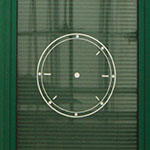Euroacademia Conferences
 Europe Inside-Out: Europe and Europeanness Exposed to Plural Observers (9th Edition) April 24 - 25, 2020
Europe Inside-Out: Europe and Europeanness Exposed to Plural Observers (9th Edition) April 24 - 25, 2020 Identities and Identifications: Politicized Uses of Collective Identities (9th Edition) June 12 - 13, 2020
Identities and Identifications: Politicized Uses of Collective Identities (9th Edition) June 12 - 13, 2020 8th Forum of Critical Studies: Asking Big Questions Again January 24 - 25, 2020
8th Forum of Critical Studies: Asking Big Questions Again January 24 - 25, 2020 Re-Inventing Eastern Europe (7th Edition) December 13 - 14, 2019
Re-Inventing Eastern Europe (7th Edition) December 13 - 14, 2019 The European Union and the Politicization of Europe (8th Edition) October 25 - 26, 2019
The European Union and the Politicization of Europe (8th Edition) October 25 - 26, 2019 Identities and Identifications: Politicized Uses of Collective Identities (8th Edition) June 28 - 29, 2019
Identities and Identifications: Politicized Uses of Collective Identities (8th Edition) June 28 - 29, 2019 The European Union and the Politicization of Europe (7th Edition) January 25 - 26, 2019
The European Union and the Politicization of Europe (7th Edition) January 25 - 26, 2019 7th Forum of Critical Studies: Asking Big Questions Again November 23 - 24, 2018
7th Forum of Critical Studies: Asking Big Questions Again November 23 - 24, 2018 Europe Inside-Out: Europe and Europeanness Exposed to Plural Observers (8th Edition) September 28 - 30, 2018
Europe Inside-Out: Europe and Europeanness Exposed to Plural Observers (8th Edition) September 28 - 30, 2018 Identities and Identifications: Politicized Uses of Collective Identities (7th Edition) June 14 - 15, 2018
Identities and Identifications: Politicized Uses of Collective Identities (7th Edition) June 14 - 15, 2018
Gestalt, Perception, Distinction, Identity and Identification – Semiotics Applied in the Qualitative Specification of Objectives for Design Processes: The Power of Distinction and Non-Verbal Communication through Gestalt and Facts
-
-

-
Presentation speakers
- Gerhard Eichweber, Value Group, Switzerland
- Download presentation
Abstract:
Paul Watzlawick’s affirmation, that one “can not not communicate” applies to all non-verbal communication. But non-verbal communication is much neglected in courses on management and economy. This has numerous negative effects. It can be seen as indicator of the roots of crisis. But it also clearly indicates much neglected potentials to be understood and realised. Semiotics, as far as its application in the interpretation of artefacts, be it in product design, architecture, urbanism and signage for the effective orientation in unknown man-made environments, in most academic research and literature is applied in analysis of the existing. But hardly ever in the specification and achievement of objectives. The latter being the proof of “usefulness” of semiotics applied to the specification, definition and realisation and perception of artefacts, such analysis would serve better, if applied to the control of the achievement of objectives specified in qualitative terms prior to designing artefacts. Indeed, the author and his associates since the early 1980s have included semiotic techniques in their design methodology and applied it in the conception of artefacts, such as products and structures. Coming from “Information-Aestetics” and “Psychology of Perception”, “Gestalt” and, moreover „Gestaltung” as well as “Artefacts” are interpreted as key-words for briefing “Design”. As far as “Design as a Management-Tool for Success”, the paper hints upon potentials of applied semiotics as methodical techniques and its inclusion in academic and extracurricular teaching. But, moreover, it links qualitative specification of objectives to sustainable management.
-
Related Presentations
















